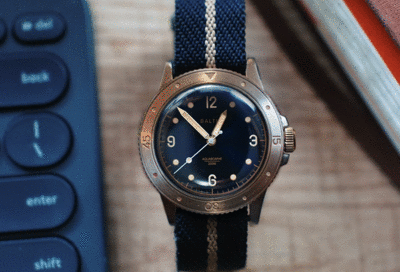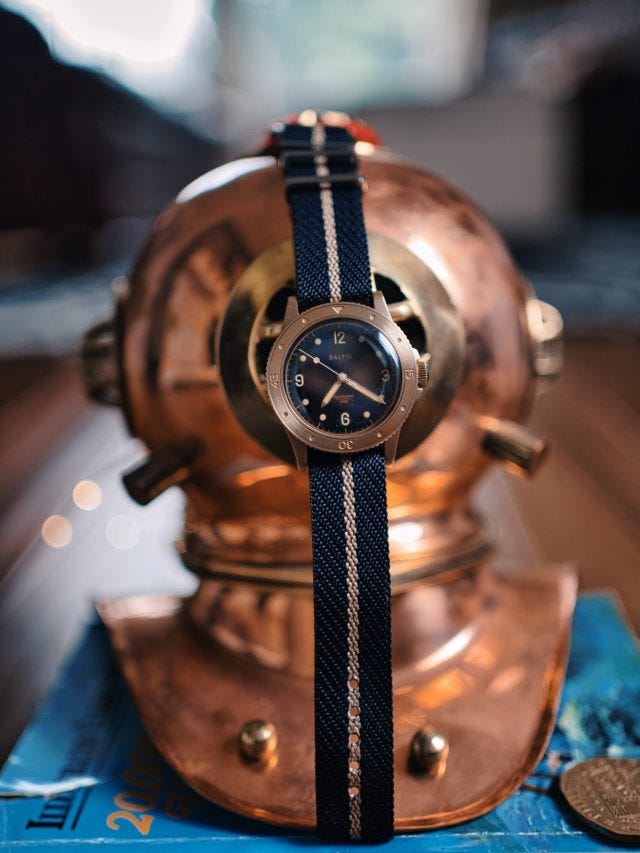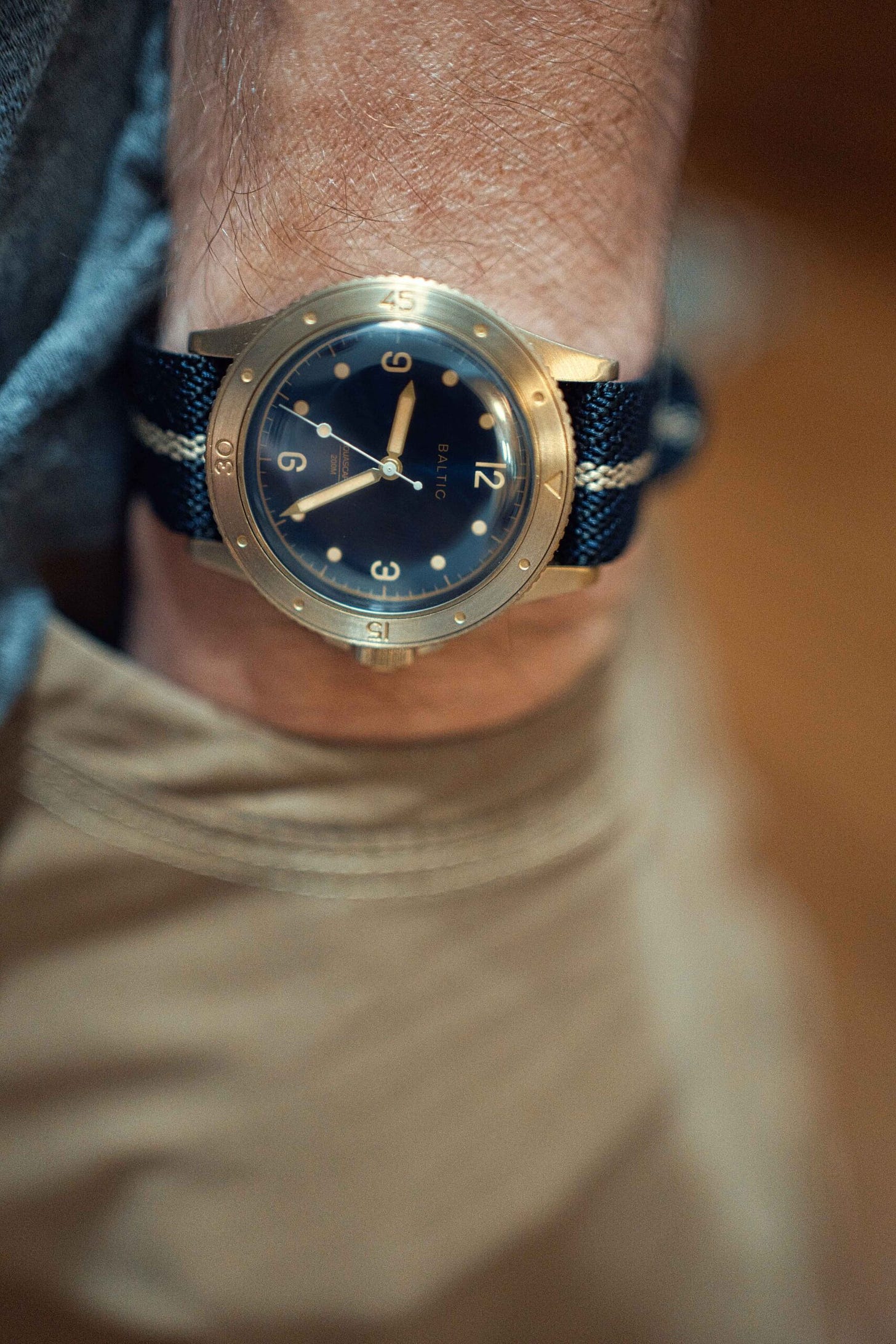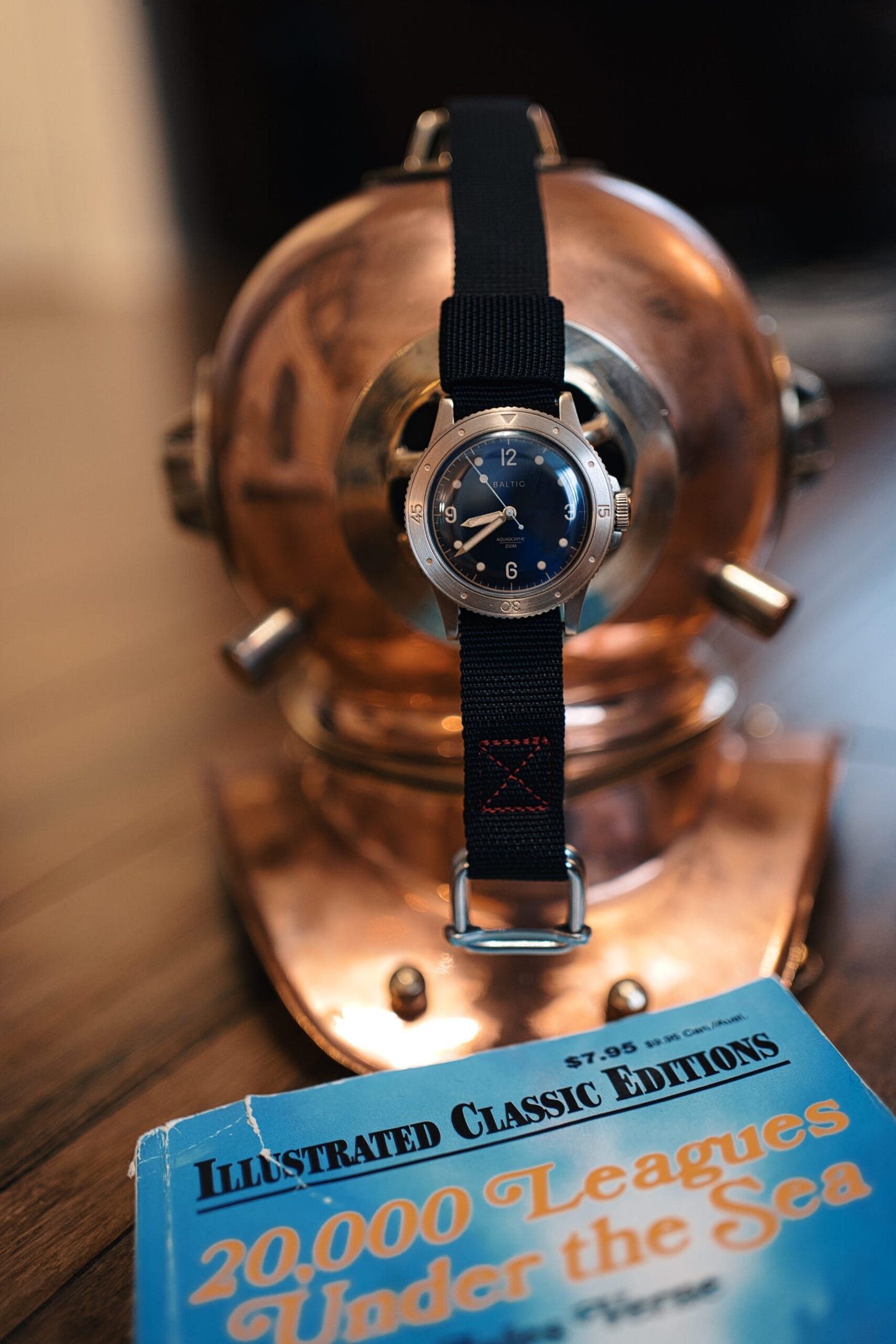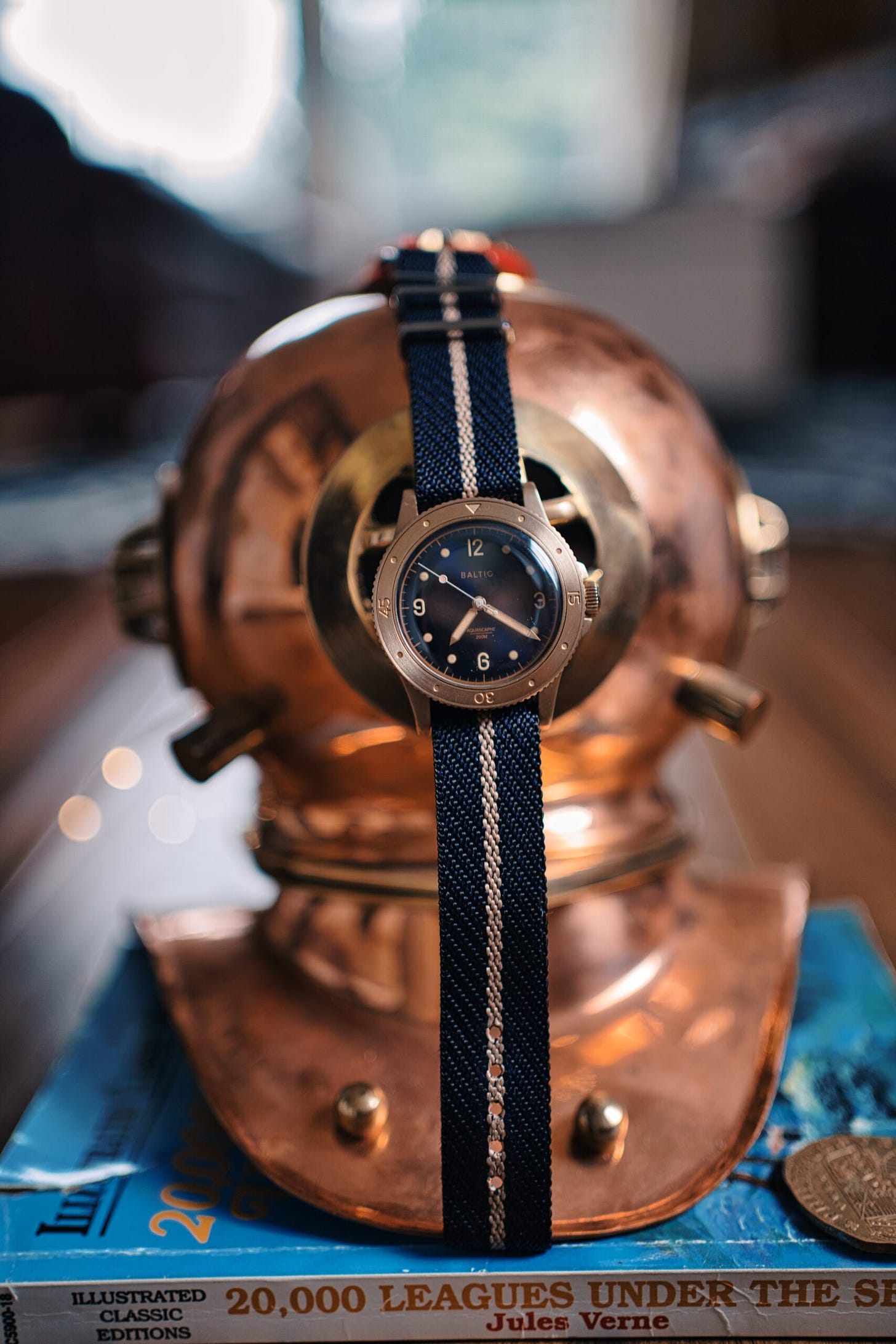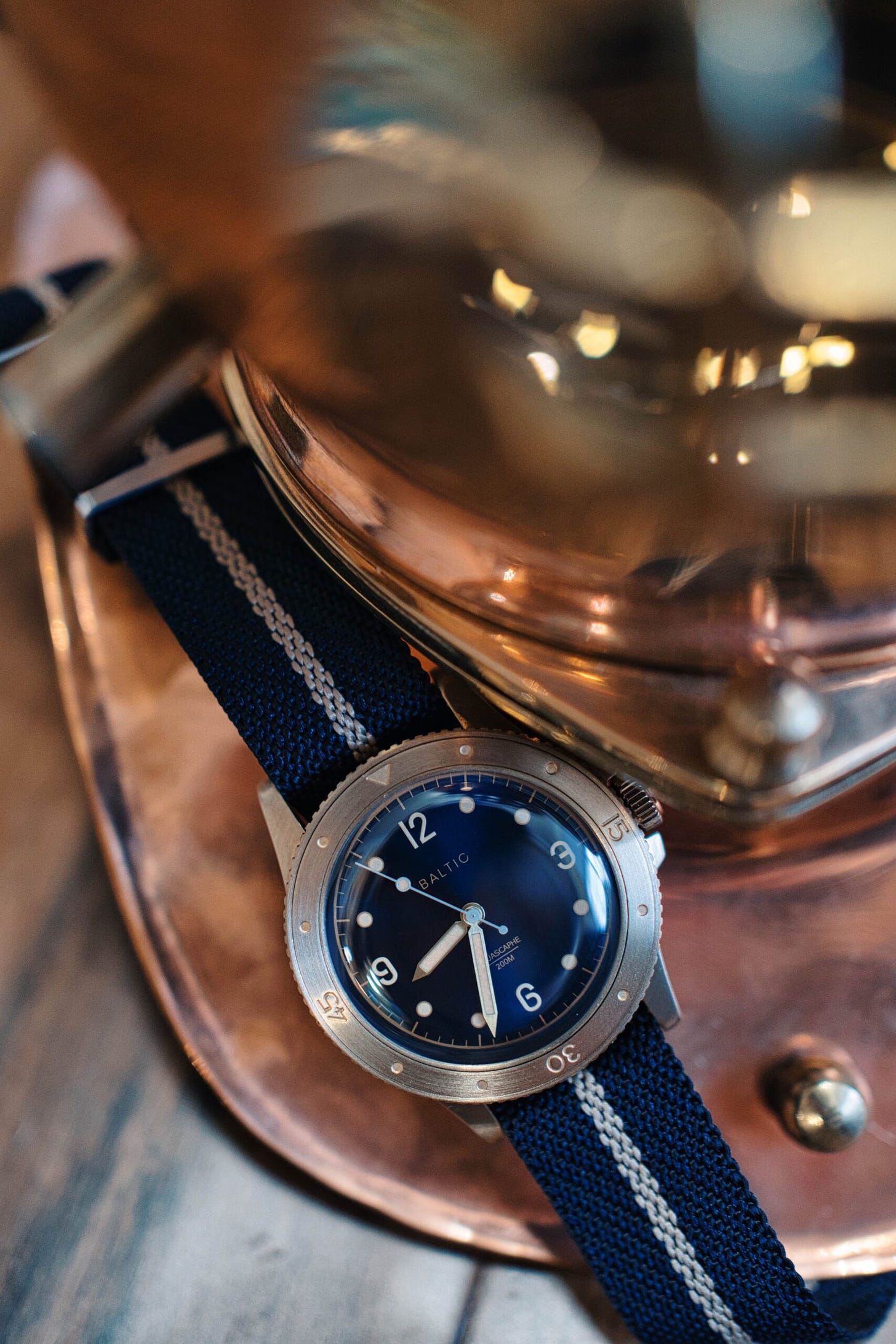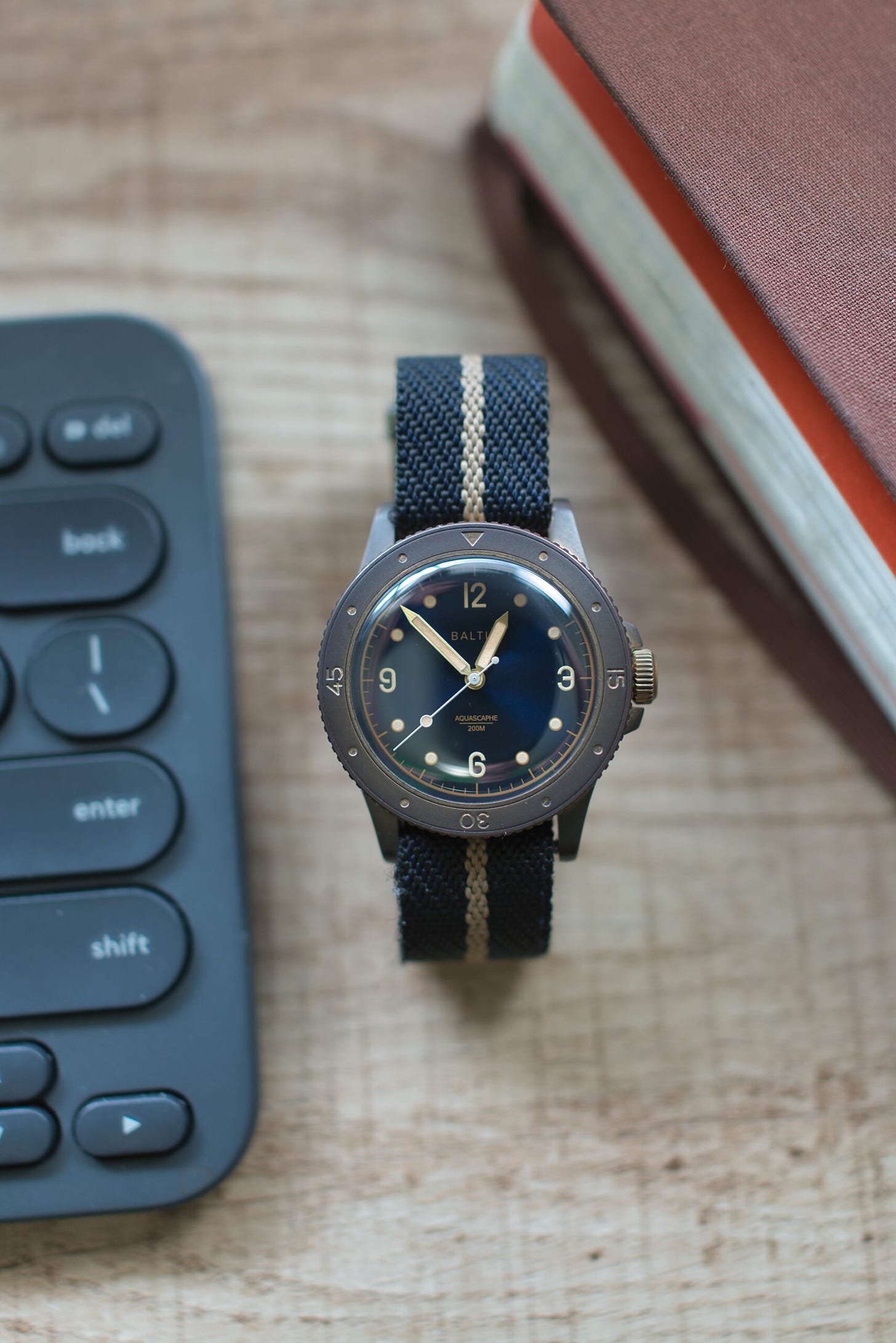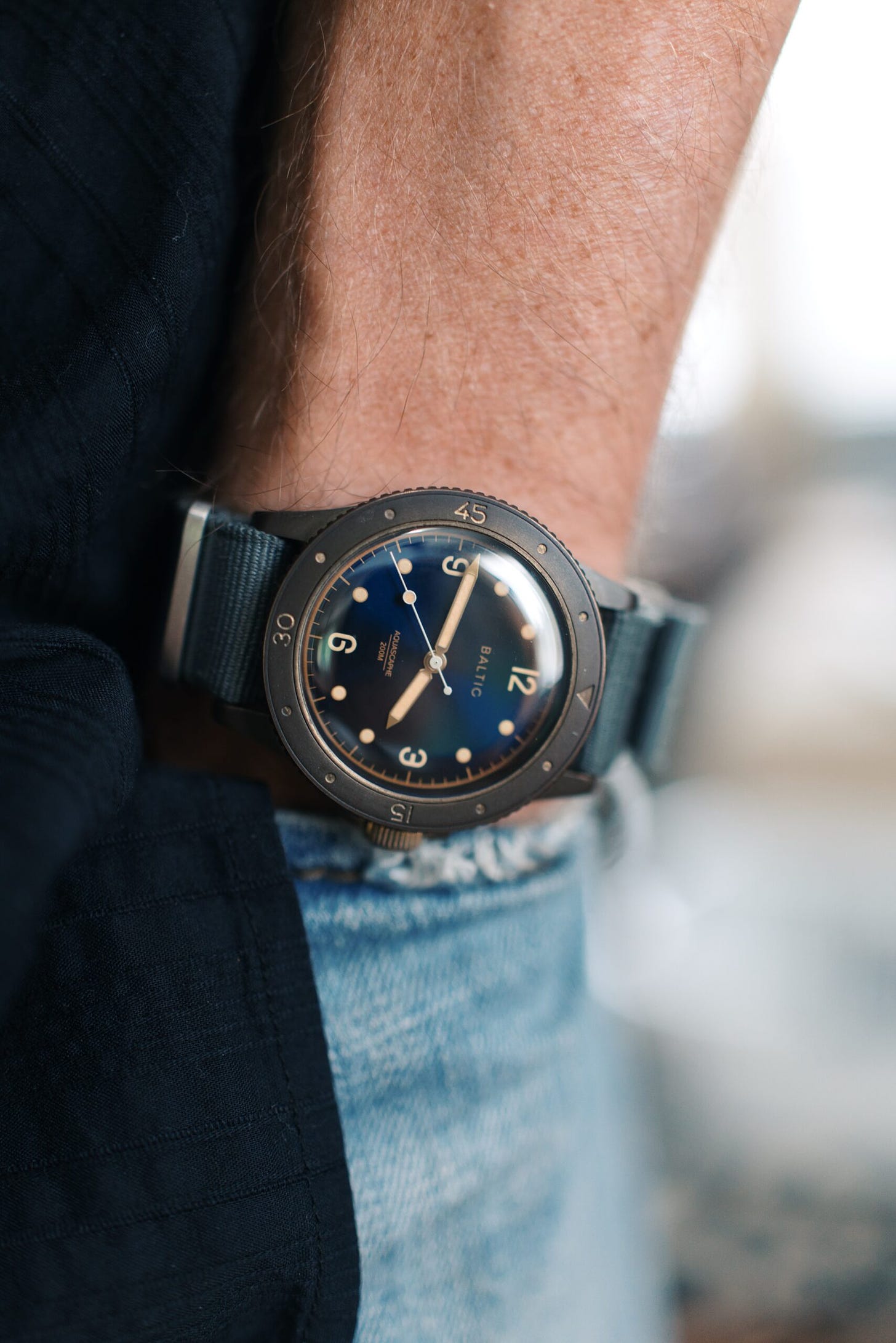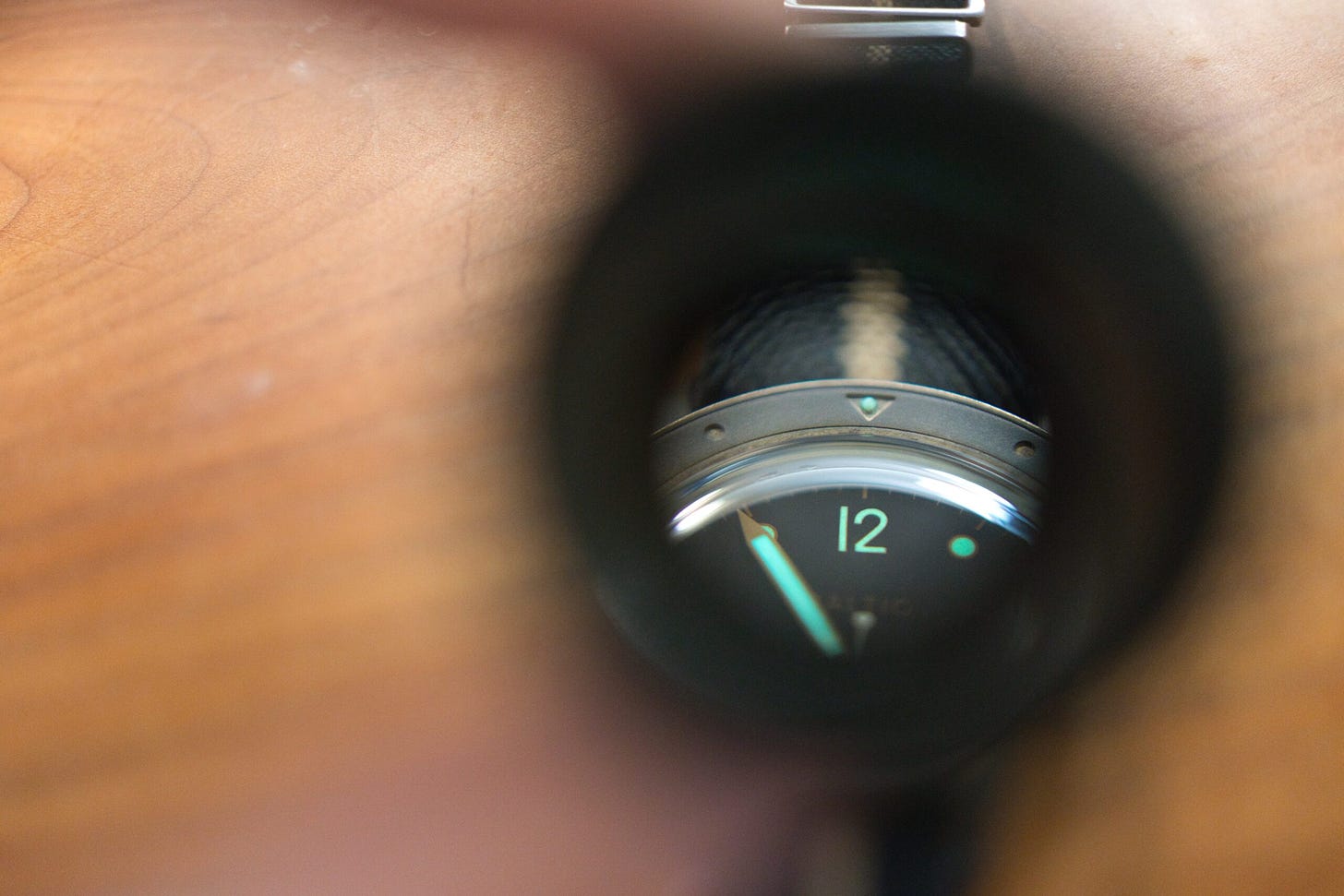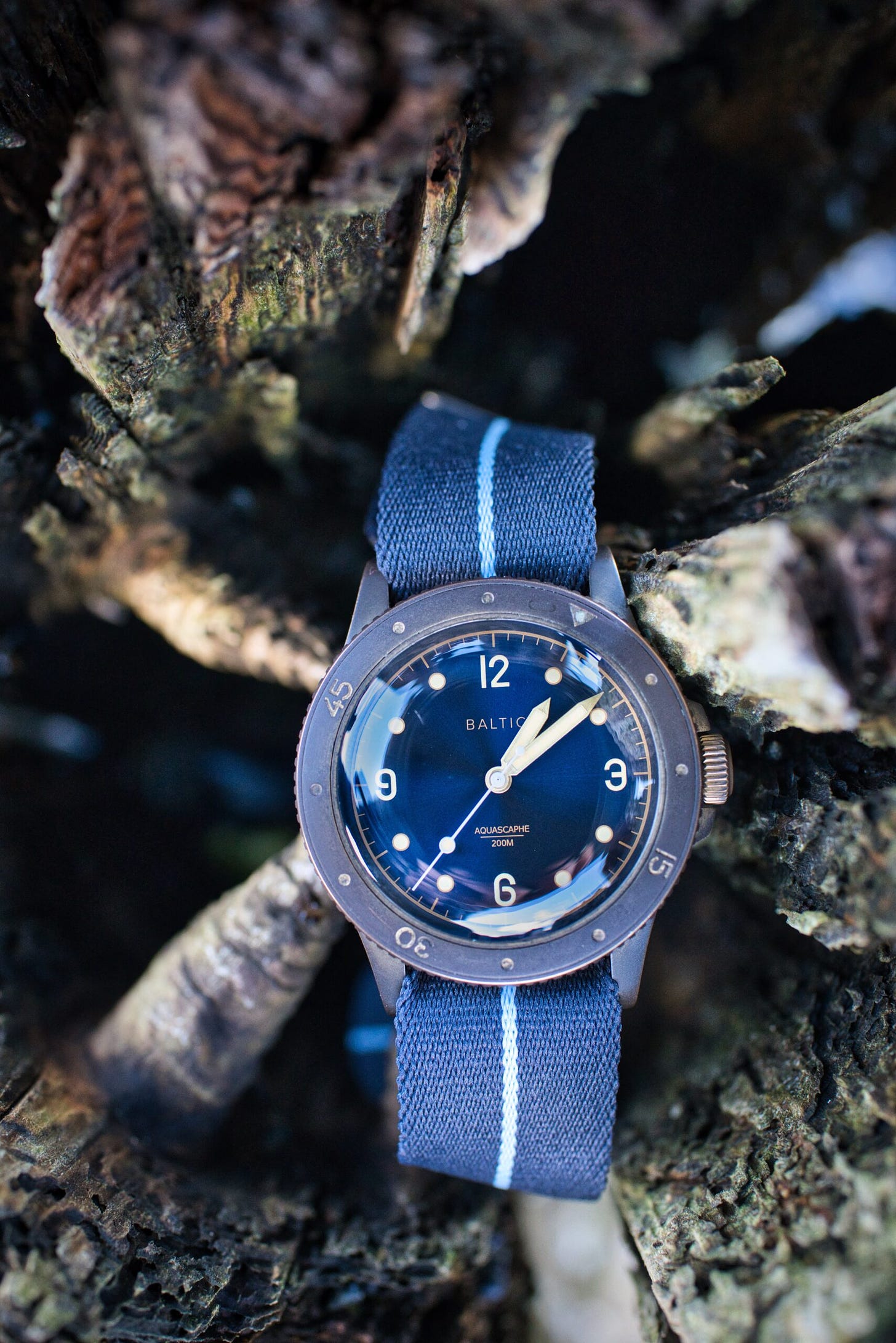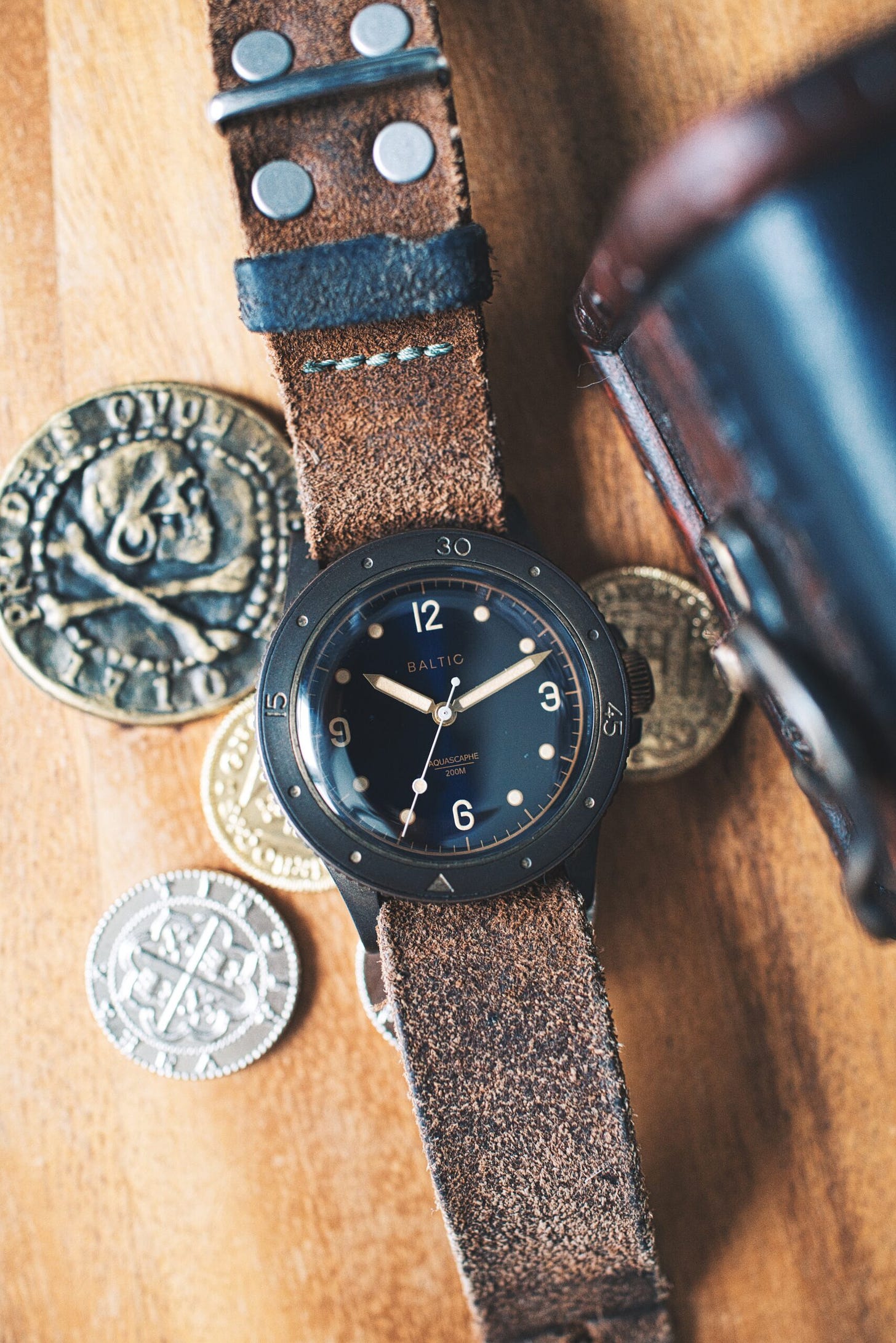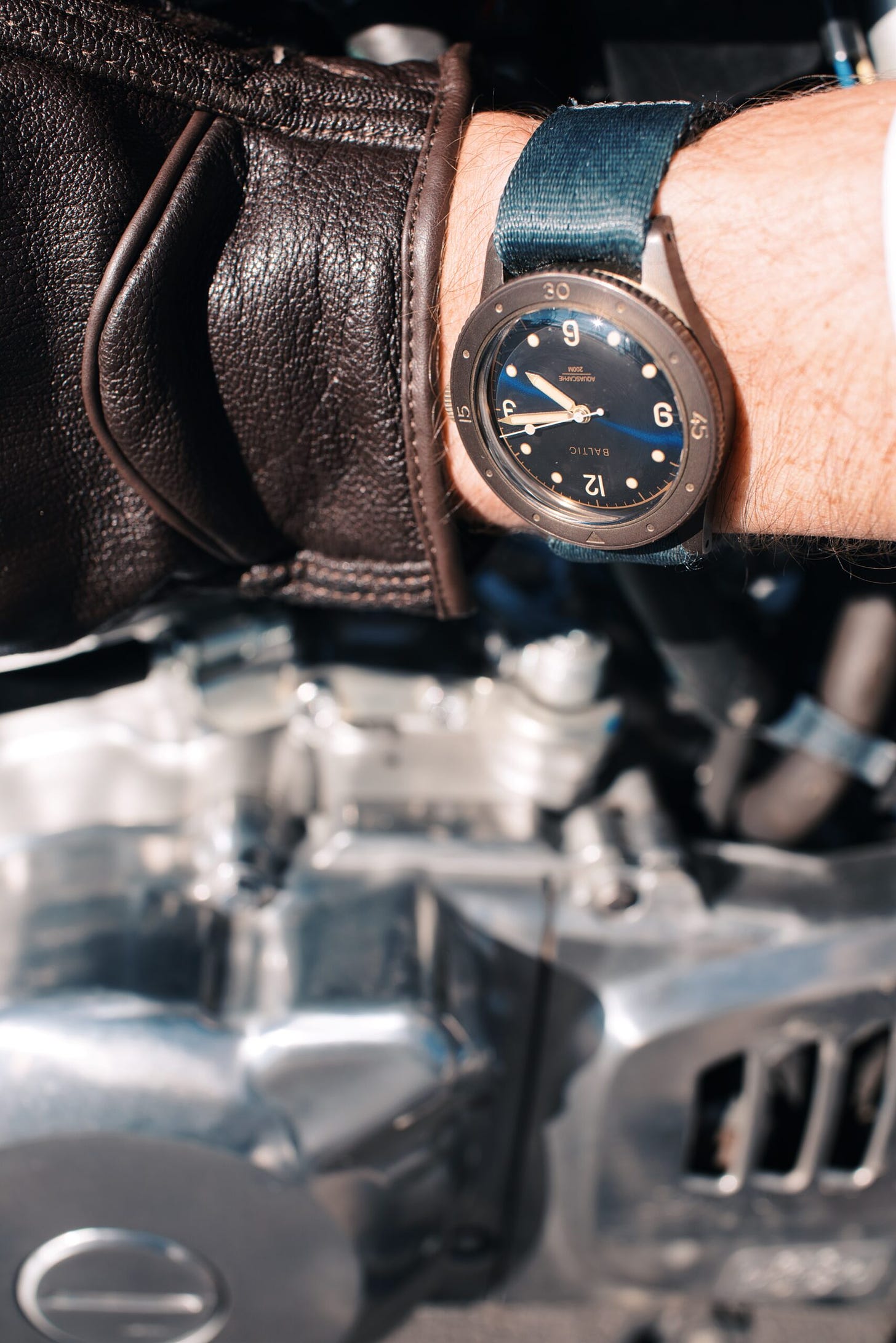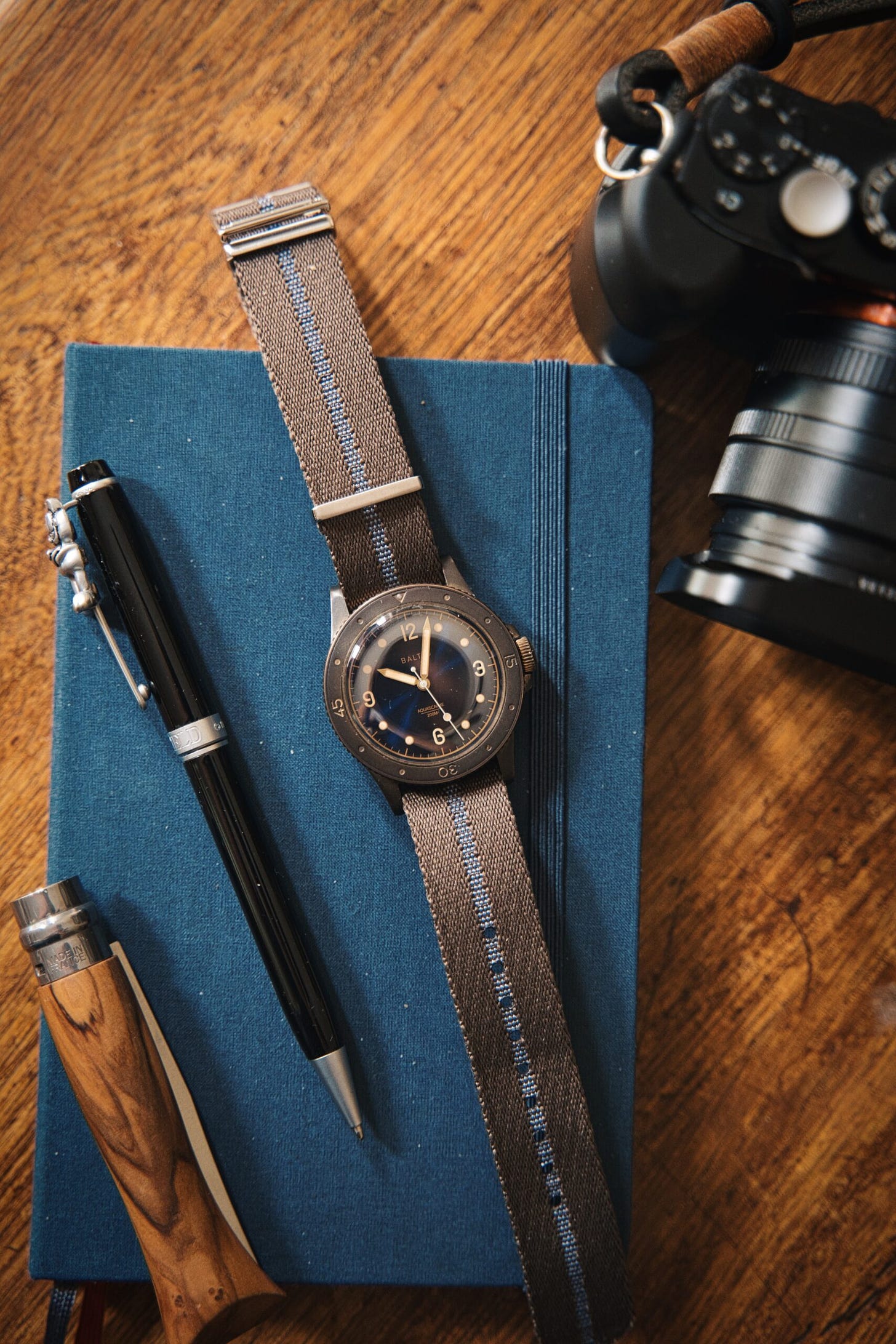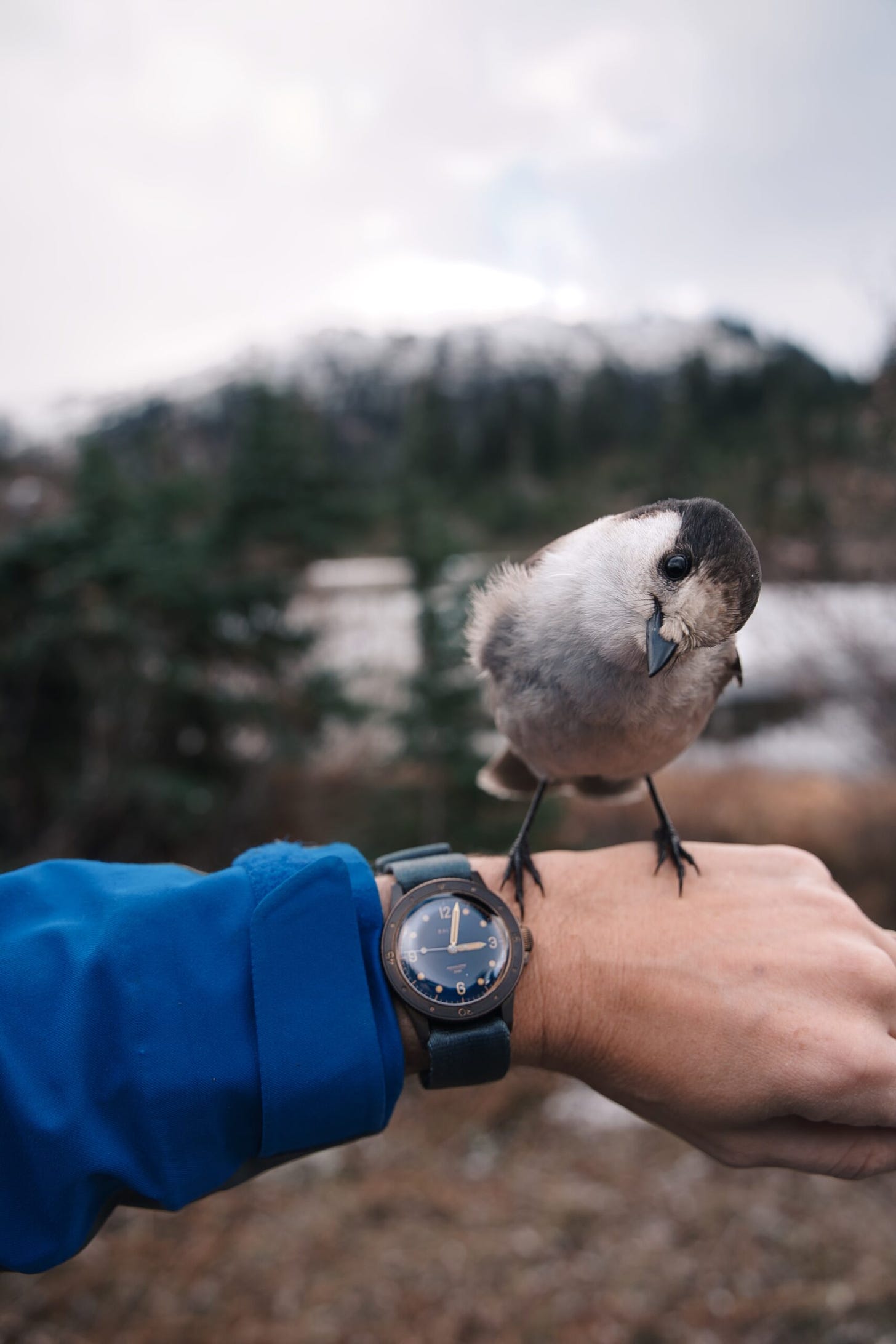Baltic Aquascaphe Bronze & A Year of Patina
2020; the year where we all felt a little weathered, or dare I say patinaed?
Also available on AJBarse.com
2020; the year where we all felt a little weathered, or dare I say patinaed? Today marks one year from when an early Father's Day gift turned into a year long companion on my wrist. What the Two Broke Watch Snobs might call a #watchfast became a full Year-on-the-Wrist through a once in a life time event (or so I hope), a global pandemic. Around the web, there has been a boom in the #watchfam media sphere as more and more people have tuned into horology and timepieces. Within this community of enthusiasts, it's common to find reviews with a "week on the wrist." But today, I inadvertently offer a different take, on a material and a watch in a year-long 'pandemic on the wrist' with the Baltic Aquascaphe Bronze.
Bronze Curious
Back around 2017, when people could physically bump into each other on accident at say, the local Food Co-op, I ran into a gentleman here in Bellingham wearing, at the time, a unique watch. Bellingham isn't a horological hotspot, so seeing a more unique timepiece on someone's wrist is usually indicative of a rare enthusiast or someone with a story to tell. As I was at the check-out stand with some local produce, the gentleman in front of me, as many do, grabs the divider to separate our purchases when I caught sight of a copper colored dive watch. As I say thanks to the cashier, I turn to the other patron packing his groceries and just ask, "Tudor Black Bay?" A chuckle and "good eye" from the gentleman led to conversation about it and about loving it when he sails his boat in Bellingham Bay. It was only a year or two after that watch had come out. What interested me about his example was the fact that his bronze was no longer a brilliant bronze copper, or green like I expected it to be in the northwest, but instead had just turned an almost tropical brown.
What makes up bronze?
From that conversation I realized something about bronze; I hadn't a clue of what it was actually made. After a bit of researching the metallurgy of bronze, as well as asking a few nautical enthusiasts I knew, I quickly discovered why this amalgam patinas at all and why historically it's been used for so many things from statues to nautical equipment.
Not all bronze is the same, as it is a mixture of percentages of copper, tin, and later the addition of aluminum. Jack Forester, of Hodinkee, detailed the process in a 2016 article on bronze and its traditional amalgam of tin and copper;
"The patina itself is the result of copper oxidizing from exposure to air… [t]his is especially a problem in marine applications, where aluminum bronzes are preferred. This is because aluminum bronzes resist oxidation better, and the aluminum oxides that form in the patina provide superior corrosion resistance (as well as discouraging the formation of copper sulfides). For this reason, Tudor's used an aluminum bronze for the Black Bay Bronze."
Jack Forester, 2016
Tending to Bronze and Patina
In the years after that Tudor, several other watch brands crafted their watches in different amalgams of bronze. From Oris commemorating U.S. Navy master diver Carl Brashear, to small Vancouver based Halios just north of us in Bellingham with their simple Seaforth in bronze, the materiel was becoming more broadly used. With bronze-curiosity on the rise, many collectors and enthusiasts were asking the same three questions: how does one tend to Bronze? How will the patina develop (and in some cases, how to force certain patina coloration)? And lastly, how could one reverse the patina that had developed? UK based watch manufacturer Christopher Ward even produced a video for their dive watch on how to "care" for bronze; a good reference for any bronze or patina-curious watch owner. Bronze, unlike stainless steel, has a natural reset switch of sorts. Should a bronze wearer deem it necessary, the patina can be reduced or reversed, as Christopher Ward outlines in their cleaning and maintenance video for their Diver C60 Bronze.
Baltic Aquascaphe Bronze
It was at the very start of the pandemic when French based watch company Baltic teased their very own bronze version of their regularly steel Aquascaphe (a watch that had already been on my short list, save for a few design elements I wished for... and that somehow heard). Teased in that ad was the potential of a blue dial, guilt, numerals, and crown guards. A combination my wife liked as well, it would be her that surprised me with this newly created Aquascaphe Bronze as an early Father's Day present.
The Aquascaphe itself is akin to the skin diver watches of the 70s, with a sizing and aesthetic of the 50s. The Aquascaphe's case dimensions are in the growingly popular 39mm with a 47mm lug to lug. Having taken this on mountain and in water, it is a watch for people enthusiastic about getting out, adventuring, and just living life. It naturally darkened through those adventures, with a patina reflective of that life.
Baltic uses a CuAL8, with the aluminum helping to prevent the more green bronze-disease patina that other watches can develop. I won't say this watch patinas slowly, if you actively ware it. Rather, I will say it patinas evenly. Gone is the bright almost copper look of this case, a look my wife now prefers. In its place is an older, well spent US penny toned case. Of course, patina can be forced as many enthusiasts have written about in the forums. But for me, the appeal of bronze is that its patina is related to the life it lives; it isn't something that should be forced or artificially induced. If you wear it, it will patina.
A Miyota 9038, which is a dateless 9015, powers the the Aquascaphe line and, at least in mine, has been adjusted to keeping better time than the base spec of the movement. I did have to send mine back to Paris about a month after I got it for a slight defect; the hour-hand fell behind and wasn't indexing on the hour mark correctly. But, Baltic took care of it without any hassle within about two weeks. The service experience punched in above its weight in my opinion. They not only readjusted the hands but also deemed it important to do a full movement swap and readjustment as part of the repair. That aside, the fact that it is running a Japanese made Miyota reminds me of those late 70's department store skin divers. Often running movements that were made by other brands (Swiss or Japanese), that era of watches was a lot more accessible and maintainable. Those watches were more an everyday life tool-watch, rather than the luxury dive watch that often never saw anything beneath the water.
A year pandemic, on the wrist
Let me start by saying, I am one who has no intention of ever reversing the patina on this Baltic Aquascaphe Bronze. I live an active PNW life. At the start of this, I really wanted a bronze watch for the reason that it would patina; making a piece-unique, to me alone, in a way only the Pacific Northwest could do. If you are one who is bronze curious, as I was, then the kind of person who will appreciate wearing a bronze watch is one who leans into change. It isn't for the watch-flipper, or the person who worries about keeping something pristine, or for the watch-investor. It is for a person who loves to live life, who wants something to weather alongside the wearer. I know this is going to sound completely weird, but acquiring a bronze watch at the beginning of a pandemic was the perfect time to do so, even if I didn't realize it at the time. Not only does this watch's patina show the PNW life I regularly live, but in this case, it reflects the changes I, as well as so many of us, have had to go through. This patina is in some small way, a time capsule. I can only hope that soon, we all will be able to put this pandemic behind us and look forward. Whenever that will be, as I continue to wear this watch, it can remind me of how it became so dark, both figuratively during the pandemic and literally for the patina. It won't be some kind of weird souvenir to remember the pandemic, but rather a reminder of how my family and I lived through the pandemic and how we changed during that time.

